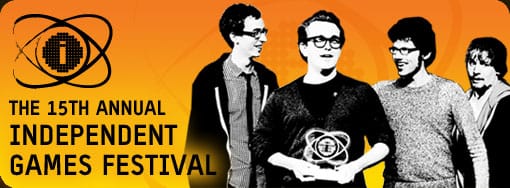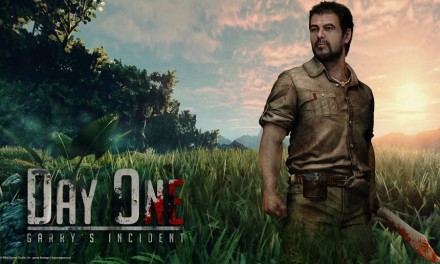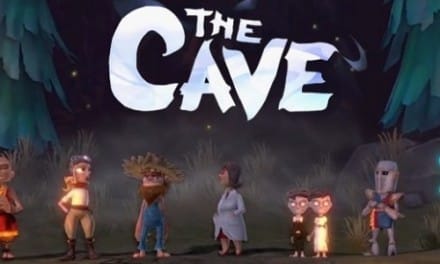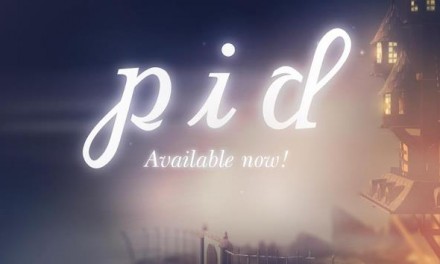The Independent Games Festival was established in 1998 by the UBM Tech Game Network to encourage the rise of independent game development and to recognize the best independent game titles, in the same way that the Sundance Film Festival has honored the independent film community.
The IGF offers finalists both global exposure and more than $50,000 in cash prizes to each year’s winners, in addition to a guaranteed slot on Valve’s Steam distribution service for Main Competition finalists and a one year subscription to the Microsoft Development Network for winners.
The 15th Annual Independent Games Festival was hosted by the Game Developers Conference (GDC) at the Moscone Convention Center in San Francisco and some hours ago this year’s winners and runner ups were revealed. They competed for recognition in different categories, including Excellence in Design, Excellence In Visual Art, Technical Excellence, Excellence in Audio, Best Student Game, Nuovo Award Audience Award, and the Seamus McNally Grand Prize.
With this article we are going to provide you with everything you need to know about last night’s great winners.
Cart Life (Seumas McNally Award, Nuovo Award)
Until a few months back the truth is that not so many people were familiar with Cart Life, but as soon as the game featured on the shortlist for the Seumas McNally Grand Prize from the Independent Games Festival along with Faster Than Light, Hotline Miami, Kentucky Route Zero and Little Inferno the game was introduced to a wider audience.
Now that Richard Hofmeier’s realistic retail simulation for Windows about food cart workers trying to achieve their dreams, earned the Seumas McNally Award for Best Independent Game and its associated $30,000, and the Best Narrative Award and the Nuovo Award for abstract and unconventional games, it will be the talk of the town in the indie scene for quite a while.
http://www.youtube.com/watch?feature=player_embedded&v=lFxeU8swXUc
Cart Life showcases the lives of self-employed street vendors in a small city located in the Western United States. At the start of the game, the player can choose between one of three playable characters (one of which is locked in the free version of the game). After an introduction to the character’s back-story, which always evolves around some sort of personal and financial tragedy, and a and a brief tutorial about how to run the a ‘cart’business, the player is left to figure out the rest of the game with very little hand-holding. The success of the business determines the events to follow in your characters dreary life.
FTL: Faster Than Light ( Excellence in Design, Audience Award)
The other IGF multi-award winner for the evening was acclaimed space strategy title FTL: Faster Than Light by Subset Games which was honored with both the Excellence in Design Award and the Audience Award.
FTL: Faster Than Light is a spaceship simulation roguelike-like. Faster Than Light was one of the most successful Kickstarter funded projects back in February. The development duo wanted to receive at least $10 000 in order to have FTL going, however due to overwhelming public demand they managed to raise 2000% more, reaching a funding amount of $200,542.
http://www.youtube.com/watch?feature=player_embedded&v=Vk_2s55KTrE
In terms of gameplay Subset Games describes FTL as a split into two major parts: exploration and combat. You explore by travelling instantly with your FTL drive between discrete “Jump Beacons;” every location contains a text-based event that has a variety of choices and outcomes.
“There is enough content, enough races and ships and weapons and tricks and tactics in Faster Than Light to outweigh pretty much every commercial ship simulator ever released, and that’s just under 10USD. It’s tremendous value for money, and we’ve had many unforgettable moments with the game, chuckling at the silly enemies who couldn’t see our attack coming, or helplessly watching our crew mauled to pieces in a last desperate Medbay stand against swarming Mantis, a manly lump in our throats as they play their pixelated deaths.
As it stands, FTL is a masterful reconstruction of that captain-defining moment, and while it has plenty of room to grow, it’s spectacular at what it does. The game’s diamond-edged difficulty will punish every oversight, and make each mistake a grave one. However, you’ll go back to it over and over again, if nothing else to see if you can do that flame laser trick on other enemies, and watch them choke in cold, hard vacuum for a change,” we wrote upon reviewing the game.
Kentucky Route Zero (Excellence in Visual Art)
Surreal magical realist adventure game Kentucky Route Zero by Cardboard Computer won the Excellence in Visual Art award for its beautifully designed environments.
Kentucky Route Zero is a five-act game about a secret highway in the caves beneath Kentucky, and the mysterious folks who travel it. According to Cardboard Computers gameplay is inspired by point-and-click adventure games (like the classic Monkey Island or King’s Quest series, or more recently Telltale’s Walking Dead series), but focuses more on characterization, atmosphere and storytelling rather than clever puzzles or challenges of skill. Unlike mainstream games, Kentucky Route Zero doesn’t force you to speed-run the game.
http://www.youtube.com/watch?feature=player_embedded&v=gGQOaz1xFOo
“Kentucky Route Zero manages to engage you to its premise, and unlike other episodic game’s it makes it impossible to predict what will come next. With such a great first entry expectations are now high and with four more acts set to be released over the course of 2013 we will sit and wait to see if Kentucky Route Zero manages to maintain or even exceed the momentum that was successfully created.”we wrote upon reviewing the game.
All in one, if you’re at into trying something totally different (as opposed to puzzle or conventional adventure) games it might be worth the small initial investment — $7 just for Act 1, or $25 for the lot — to explore the game’s own lonesome valley.





